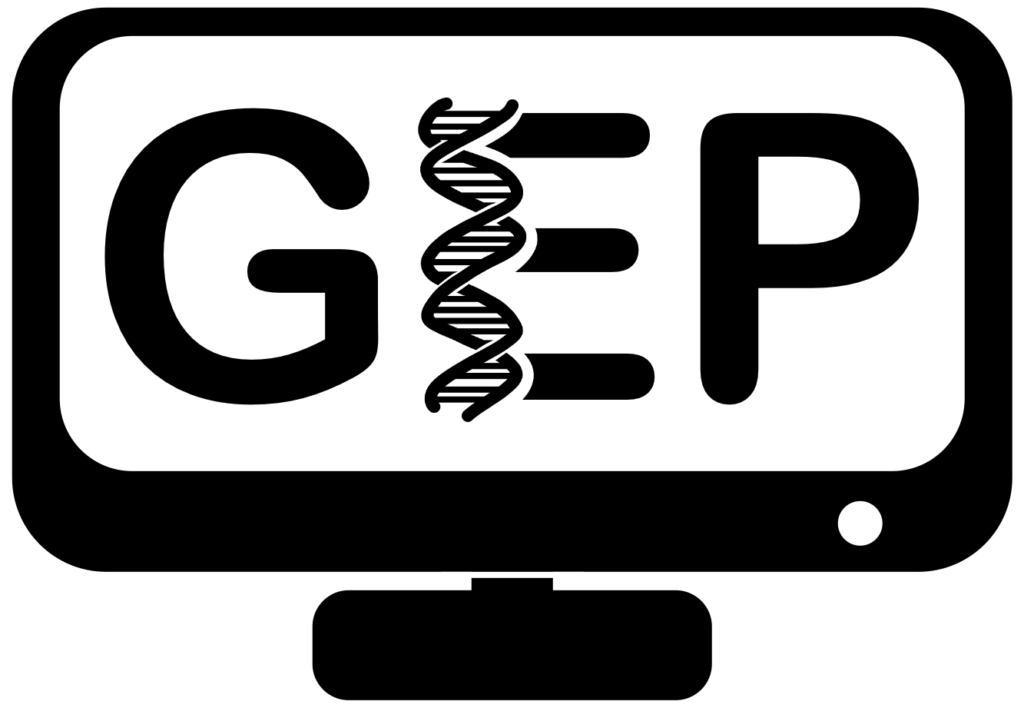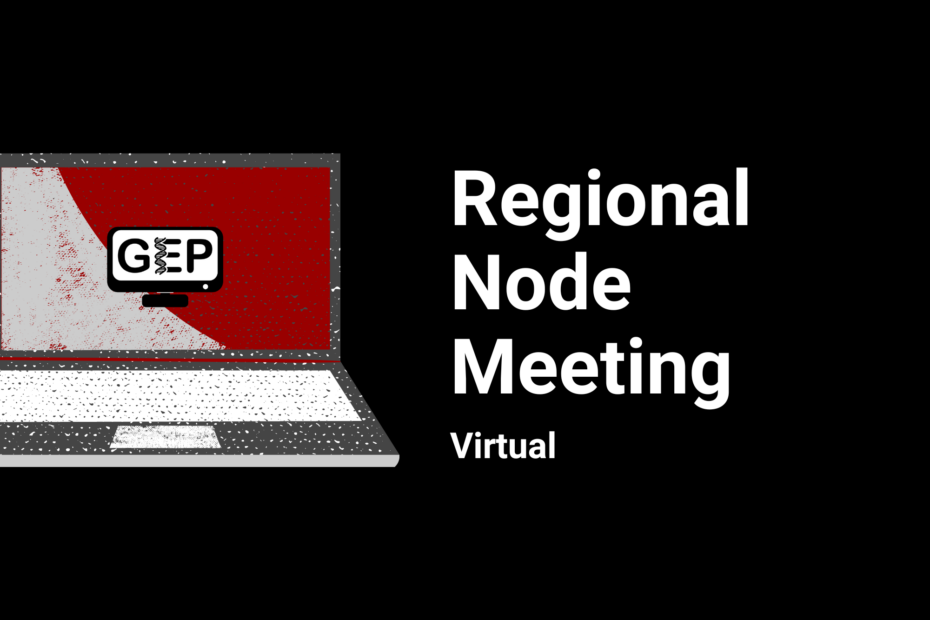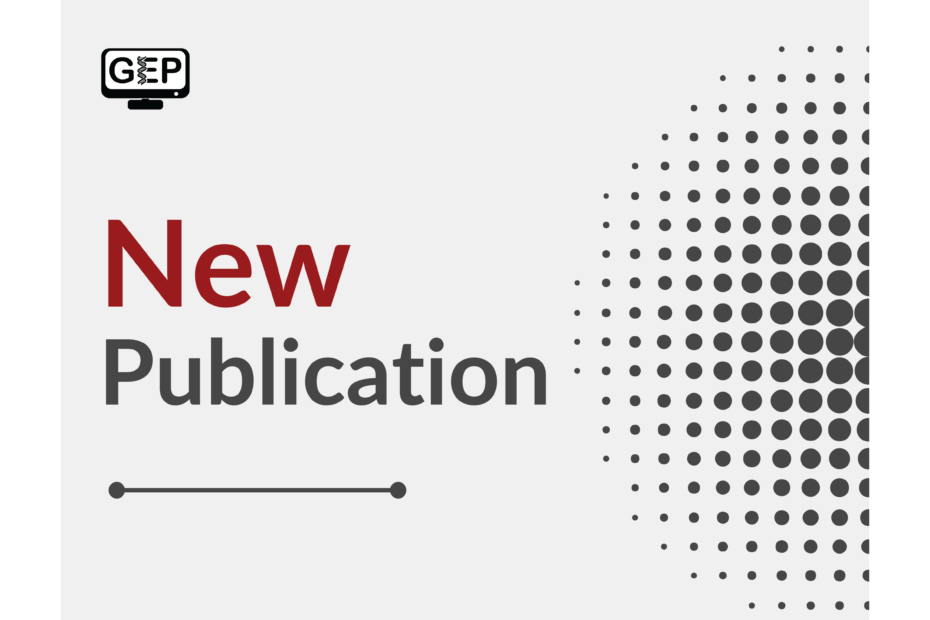Pathways
Melinda Yang Publishes Specifications Grading in GEP-CURE
Abstract
Introducing bioinformatics-focused concepts and skills in a biology classroom is difficult, especially in introductory biology classrooms. Course-based Undergraduate Research Experiences (CUREs) facilitate this process, introducing genomics and bioinformatics through authentic research experiences, but the many learning objectives needed in scientific research and communication, foundational biology concepts, and bioinformatics-focused concepts and skills can make the process challenging. Here, the pairing of specifications grading with a bioinformatics-focused CURE based in the Genomics Education Partnership is described. Elements include how the course structure with specifications grading facilitated scaffolding of writing assignments, group work, and metacognitive activities; and the synergies between CUREs and specifications grading. CUREs require mastery of related concepts and skills for working through the research process, utilize common research practices of revision and iteration, and encourage a growth mindset to learning—all of which are heavily incentivized in assessment practices focused on specifications grading.
Puerto Rico Regional Node Meeting – February 6 & 8, 2024
On the 6th and the 8th of February of 2024, the Puerto Rico Regional Node had a two-day Pathways Project training with Dr. Laura Reed. Node members met through Zoom each day from 4:30 to 6:00 pm AST (2:30 to 4:00 pm CST). Ten (10) GEP faculty and one (1) undergraduate student participated in the three-hour online training.
As part of their GEP onboarding, all Puerto Rico Node members have been trained in the F Element annotation methodology. However, few have worked with other GEP Projects. During the 2023 Faculty Workshop, attending Node members expressed an interest in professional development activities that would help them acquire the knowledge and skills necessary to participate in other GEP research activities. A Pathways Project training was identified as a logical next step towards achieving this goal.
The first session started with an overview of the overarching research questions, implementation ideas and an introduction to the project walkthrough. The second session covered topics such as common annotation mistakes, project claiming and submission protocols, managing report forms, and an overview of the microPublication pipeline. It also offered an opportunity to ask general questions and learn about different Pathways support initiatives. Members of the Puerto Rico Node have a special interest in the Pathways and Puerto Rican Parrot Projects and this training provided valuable knowledge and methodological insights that will serve them well as they venture (with their students) into other GEP annotation projects.
The Puerto Rico Node thanks Pathways Project Leader, Laura Reed, for setting time aside to train the Node members. A special thanks to the Regional Node Director and Co-Director, Melinda Yang and Jenni Kennell for answering many questions, sending helpful follow-up messages, and making sure the Node Leaders had the resources necessary to organize the training. Thanks to Sarah Potts for supporting the event registration, facilitating access to training materials and managing Zoom channel logistics. The planning of the training was a collaborative effort of the Node Leader and Co-Leader, Ángel O Custodio and Sheylda Díaz.
What worked well for your event that might help others plan similar events?
We had an online event during weekdays. This activity didn’t require organizing a venue or having people travel to the meeting location. It served our purpose well. Also, scheduling the training on a date removed from the beginning of the semester promoted faculty participation.
What lessons were learned from challenges in the planning or execution of the event?
Communicate often with headquarters or the Regional Node Directors before sending information to Node members. Also, remember that the Central Office will give the Node support with registrations and surveys.
What would your Node do differently based on your experiences?
Node leaders will write emails to headquarters more often to make sure they are not duplicating efforts doing some transactions that the Central Office can handle with ease. Also, they will set up a local checklist that will help plan and follow-up on certain tasks.
Genomic Neighborhood Check For Understanding
This was created in response to a member mentioning their students really struggled with the genomic neighborhood and the member didn’t realize until they were already too far into the annotation to correct their misconceptions. This is meant to be a quick in-class and/or homework assignment.
New GEP Publication on the Pathways Project Annotation Protocol
Abstract
MN/IA/Dakotas Regional Node Meeting – September 30, 2022
The Minnesota, Iowa, and Dakotas Regional Node held a virtual meeting on September 30, 2022. The meeting began with introductions, laughs, and updates. Dr. Andy Arsham was the highlighted speaker from Bemidji State University. He gave an engaging research seminar on his current work with the Zas-Znf gene family in the Drosophila lineage. The second part of the Node workshop was an open work time and space for questions around advanced gene annotations in the Pathway Project. Two awesome GEP Virtual TAs joined to answer questions while participants worked through the problematic gene Shaggy in Drosophila willistoni. There were many isoforms and the group wanted to know the best way to approach all of the isoforms. This was a great success, and everyone took something new from the knowledgeable TAs. Finally, Node members discussed and planned the student research event for the spring. Save the Date – April 21st, 2023 at Saint Catherine University! The plan is for this event to be an all-day in person event with student presentations, guest speakers, and lots of food.
Update: The in-person RNM was held on April 21, 2023 and went incredibly well. There were a total of 80 participants (including admin, staff, and STEM faculty from St. Catherine University).
What worked well for your event that might help others plan similar events?
The Node decided to focus on the Pathways Project. Some of the main objectives of the event was to perform hands-on GEP curriculum training for current GEP members. In particular, members wanted to work on and ask questions about a really difficult gene in the project. The Node Leader sent out information on the gene that would be discussed a day before the workshop. Participants ended up talking through the process and then going through questions.
Pathways Project: Annotation Videos
Pathways Project Walkthrough Series
Pathways Gene Annotation Walkthrough Videos
- Introduction
- Part 1: Examine genomic neighborhood surrounding target gene in D. melanogaster
- Part 2.1: Retrieve protein sequence of target gene in D. melanogaster
- Part 2.2: Perform a BLAST search of D. melanogaster protein against the target species’ genome
- Part 2.3: Summarize tblastn results for protein on target species’ scaffold
- Part 3.1: Examine evidence for a protein-coding gene in region surrounding the tblastn alignment in the target species
- Part 3.2: Use synteny to gather additional evidence for the ortholog assignment
- Part 4: Determine target gene’s structure in D. melanogaster
- Part 5: Determine approximate location of coding exons (CDS’s) in target species
- Part 6.1: Verify start codon coordinates
- Part 6.2: Verify stop codon coordinates
- Part 6.3: Determine phases of donor and acceptor splice sites
- Part 6.4: Use spliced RNA-Seq reads to verify coordinates for Intron-1
- Part 6.5: Use splice junction predictions to verify coordinates for second intron
- Part 7.1: Verify gene model of protein
- Part 7.2: Download files required for project submission
- Part 7.3: Merge project files
- Appendix A: Combining (or Batching) BLAST Searches
Introduction
Part 1: Examine genomic neighborhood surrounding target gene in D. melanogaster
Part 2.1: Retrieve protein sequence of target gene in D. melanogaster
Part 2.2: Perform a BLAST search of D. melanogaster protein against the target species' genome
Part 2.3: Summarize tblastn results for protein on target species' scaffold
Part 3.1: Examine evidence for a protein-coding gene in region surrounding the tblastn alignment in the target species
Part 3.2: Use synteny to gather additional evidence for the ortholog assignment
Part 4: Determine target gene’s structure in D. melanogaster
Part 5: Determine approximate location of coding exons (CDS's) in target species
Part 6.1: Verify start codon coordinates
Part 6.2: Verify stop codon coordinates
Part 6.3: Determine phases of donor and acceptor splice sites
Part 6.4: Use spliced RNA-Seq reads to verify coordinates for Intron-1
Part 6.5: Use splice junction predictions to verify coordinates for second intron
Part 7.1: Verify gene model of protein
Part 7.2: Download files required for project submission
Part 7.3: Merge project files
Appendix A: Combining (or Batching) BLAST Searches
Pathways Project: Annotation Form D. pseudoobscura Key
Students can apply what they learned in the Pathways Project: Annotation Walkthrough to construct a gene model for Rheb in D. pseudoobscura by completing the Pathways Project: Annotation Form. An answer key (generic username and password required) is provided to assist instructors in checking the accuracy of the annotation and includes potential areas of confusion throughout.
Pathways Project: Annotation Form Exemplar
The Annotation Form Exemplar is provided as an example of a completed Annotation Form ready for submission to the GEP’s Pathways Project. The optional questions were omitted from the exemplar.
Pathways Project: Annotation Form
This “Annotation Form” merged the “Annotation Report” and “Annotation Notebook” into a single document and the latter two items were archived.
The “Annotation Form” kept many of the Checks for Understanding type questions that were previously in the “Annotation Notebook.” However, given that not all faculty want their students to answer those questions, we marked any question that is NOT required for submission to the GEP as “OPTIONAL.” Currently the optional questions are organized as letters rather than numbers, which we hope will make it easy to quickly select and delete the OPTIONAL questions that faculty don’t wish to include. Again, all numbered questions are required for submission to the GEP for reconciliation.
Items that were previously asked for in the “Project Details” table of the “Annotation Report” are now available on the Genome Browser Gateway page for each species. Therefore, the “Project Details Table” instructions document is no longer needed.



